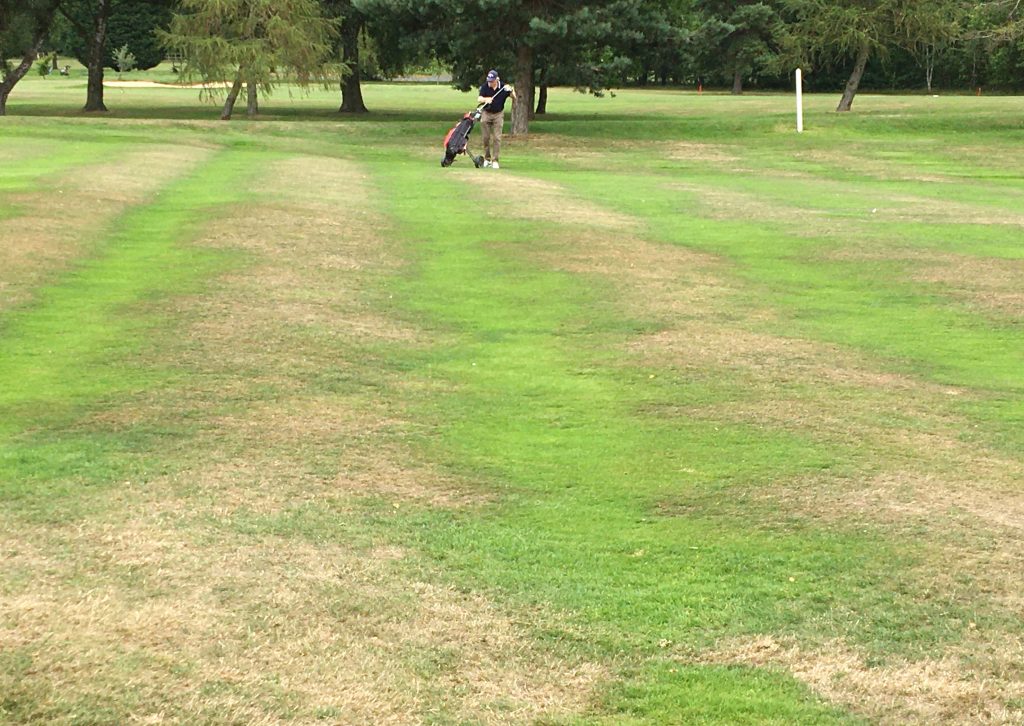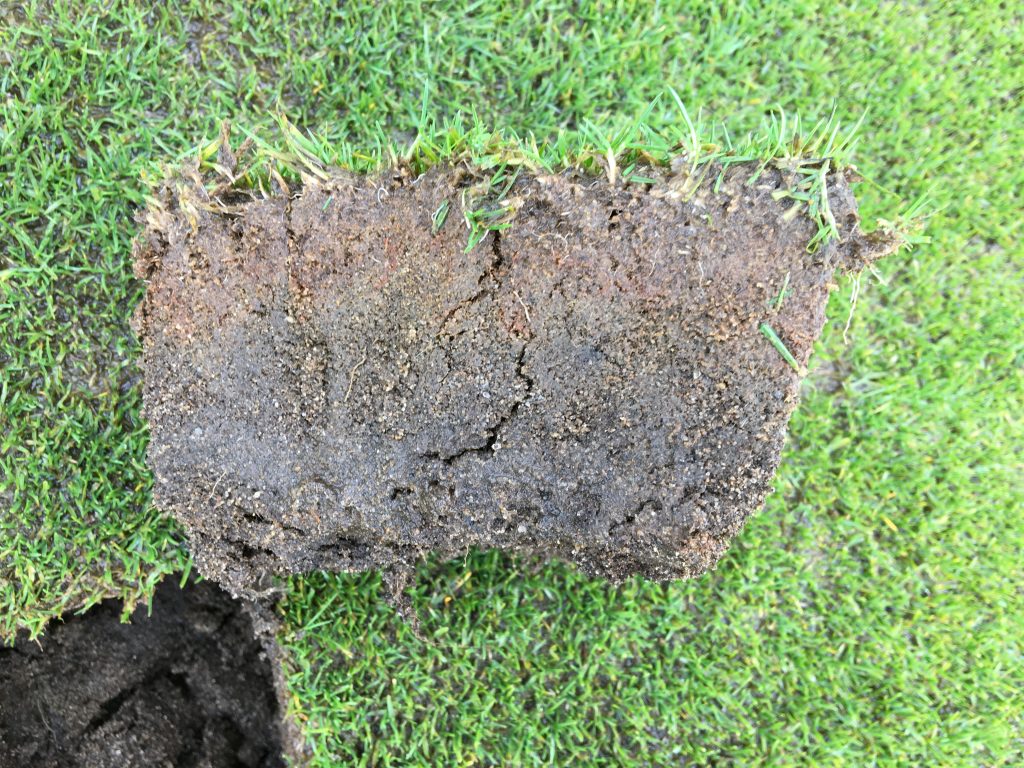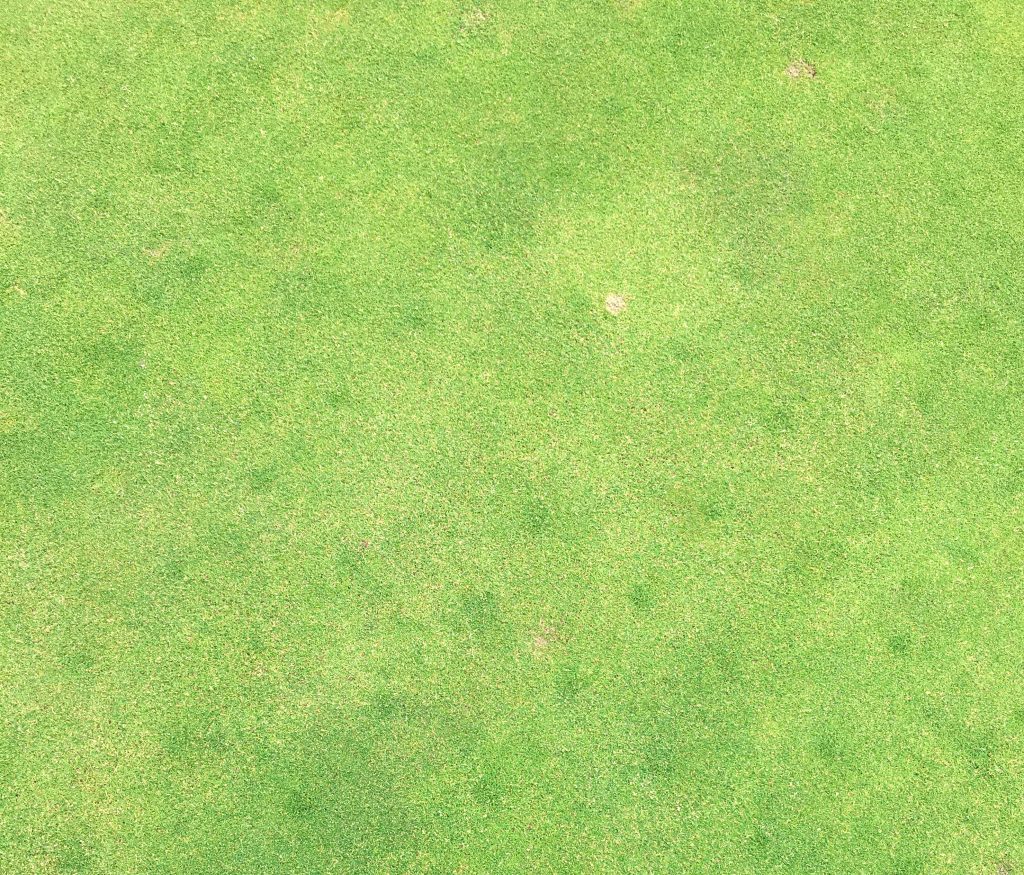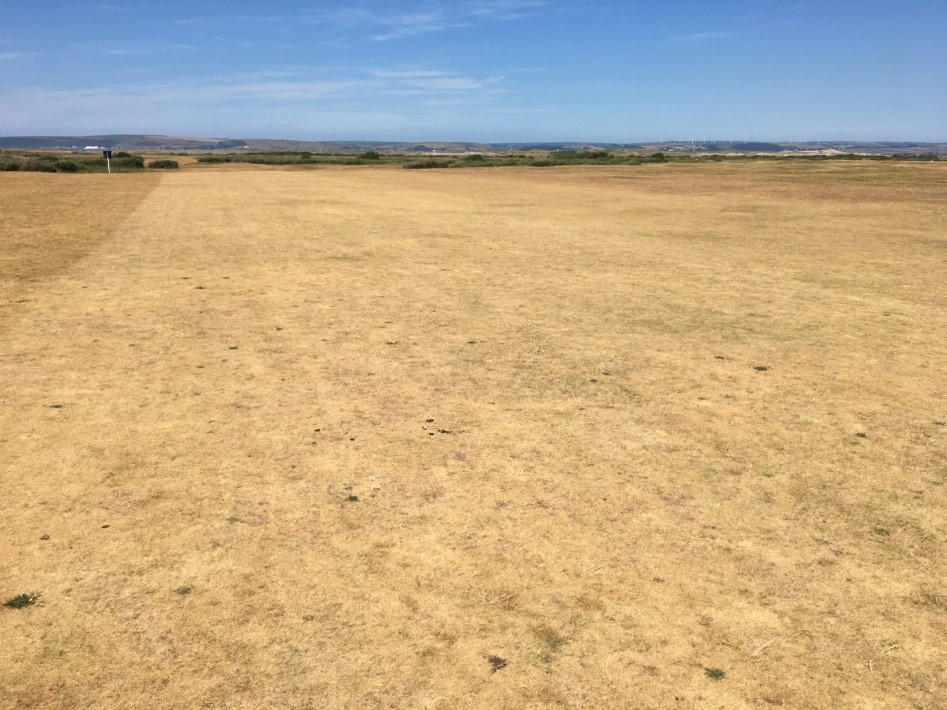Why is overseeding essential?
Related Articles
As grass mortality rates are higher than ever, greenkeepers want resilience within the sward. This, argues Noel MacKenzie, is why overseeding is essential, and why aeration, to ensure seed-soil contact, and choosing the right seed, is equally vital.
A lot of greenkeepers are under particular pressure this year trying to ensure that the courses are kept on a very tight budgetary limit from management committees who lack knowledge. To the uneducated it’s just grass … to the experts it’s choosing from the 10,000 species and often hundreds of cultivars per species that makes a difference – but that is about educating people in power!
Key within greenkeeping considerations is maintaining decent quality turf associated with performance sports turf demanded by modern golfers.

Overseeding may help situations but so can addressing the causes like these ridges in a ridge and furrow fairway
Why is this important? Why has our industry invested millions of pounds researching, developing and breeding, and testing to destruction, huge numbers of seed varieties?
The benefits derived from good quality grass breeding invested in our playing surfaces can be summed up as:
- Better colour
- Finer leaves
- Greater shoot density
- Better disease resistance
- Faster recovery
- Better visual quality
- Survivability.
All of which contributes to better quality performance sports turf which means better playing surfaces.
What is wrong with what is growing out on our surfaces anyway – it is surviving so surely that is good enough? True enough, it has survived against whatever pressures are on it but no grass plant lives forever, all succumb at some point to old age, mechanical damage, pests and so on. When that grass dies space is left within the surface where the soil is exposed. When that happens the bare ground is colonised by some other plant, that might be a desirable plant or it might be something we don’t want growing there at all, such as moss, meadow grass or broadleaved herbaceous plants, a weed in other words! Inevitably sward quality declines when invaded by a less desirable plant. Conversely, it can be improved by introducing better plants!
This matters anywhere where there is a sporting performance surface. Greens are an obvious instance but tees and fairways all need good performance and aesthetics.
Against the tide of annual meadow grass and the consistently more extreme weather events and particularly the super dry springs and torrential deluges, grass mortality rates are higher than ever, especially when mixed with the constant pressure to cut ever closer on most surfaces along with ever more capable mechanical operations in scarifying, verticutting and aeration. Other causes of early mortality are diseases, pests such as leatherjackets, chafer grubs, plant parasitic nematodes (PPNs), frit flies and so on. There are, therefore, a range of biological, environmental and man induced factors that increase plant mortality and make it occur at different times to the natural cycles grass might normally succumb within. When death occurs in the winter months due to player damage the grass isn’t replaced easily, therefore having grass that survives the pressures put upon it is important for year round golf.

Poor draining or overly thatch soils may not be worth seeding unless underlying issues have been addressed
There is a trend within some greenkeeping circles not to overseed and only rely on annual meadow grass to fill in the gaps. The monoculture annual meadow grass sward is not a new thing despite what some greenkeepers and agronomists may tell you, they have been around a long time and certainly longer than me. While there are advantages in some areas such as playing surface uniformity in spring around April / May, the risk with monocultures is that one disease hit can really do a great deal of damage in a species with little resistance, for example, Microdochium or dollar spot in meadow grass, take-all in bent grass and so on. There is not time and space here to cover this topic in depth, but assuming the club and greenkeeper want some resilience within the sward then overseeding is an important element of golf green management, be it with perennial ryegrass, colonial, velvet or creeping bent and / or fescues.
The situation of overseeeding is critically important as to determine what is oversown with. In coastal, downland and heathland areas the choice will probably err toward traditional fescues and colonial bent grass but in parkland settings bent grass, creeping bent and even perennial ryegrass may come to the fore. In mountain and poor soil settings perennial ryegrass or fescues may be the first choice. This is an incredibly vague outline of generalities – the real agronomic choices have to be made on the ground taking account of a myriad of considerations.
The seed product used should be the best one(s) available for the situation. Buying process is influenced by too many other factors in many cases, factors such as salesman friendship, incentives for ordering through one supplier / tie-ins, old habits, out of date education, old decisions – now out of date – being repeated, authoritatively written articles about high profile venues and what they use applied in other circumstances and so on. Quality counts every time, so use reputable companies, look hard at the data and if that is a bit mind boggling then seek expert assistance.

Big aeration holes can lead to dark spots on greens, made worse by emergent seed in the holes … more uniform treatments are a better choice
Look beyond rankings in the BSPB tables (useful as they are) and really pick knowledgeable sales reps’ brains because they should know their product very well, but question everything. I recommend engagement with good independent agronomists who can support and analyse the technical aspect of a grass and its management and playability, linking this with the club’s business model and what it aims to be as a club, how this fits in with resources to manage it.
Reviewing seeding success is a key part of what you are doing on your course. I was astounded a few years ago I came across a high profile coastal links course with an ocean-side green that was reconstructed. The surface had been recommended for overseeding with perennial ryegrass which is unsuited to those conditions. The green failed shortly after the first winter storms succeeded in the predictable salt contamination. This should never have happened in the first instance, yet unbelievably, the mistake was repeated! The failure to review seeding results prevented the use of the green for 18 months and surely the club must have winced from the delay.
When running overseeding operations assess progress and be prepared to review results. Be prepared to see success on one treatment and less success another time, and then question why? Overseeding policy needs seeing through over a number of years not a one or two hit wonder and then forget it.
Some factors that impact on seeding success are:
- Mowing heights
- Organic matter content of soil
- Soil health and condition
- Soil pH
- Irrigation / rainfall
- Seed – soil contact
- Fertiliser use / nutritional status
- Temperature
- Environmental match of seed to the situation it is being put in.
Some factors the greenkeeper can influence, some they cannot, but one key area is the contact of the seed with the soil. This is where the introduction of the seed to the situation where it must find succour is very important. Whilst seeds are tough, they are small and vulnerable as well. That vulnerability is at its greatest when the seed germinates and the radical (root) and coleoptile (shoot) emerge and a proper plant begins to form. It is therefore essential that that seed and all its contemporaries are as sheltered as possible. We need to ensure contact between seed and soil so scarification and aeration helps seed-soil contact before overseeding or drill seeding all of which keeps seed off the turf surface and out of harm’s way, especially on greens where cutting close is the norm.
Each grass species has a preferred depth of sowing. Aerating to eight inches with a vertidrain will be overkill so whatever tine is used, keep it shallow. The size of the seed is key to this, small seeds such as bent grass have insufficient reserves to grow the shoot to the surface whereas larger seeds like perennial ryegrass and fescue can power their way up from 10mm or more, though with finer fescues and ryegrasses, make 4-7mm more likely to be optimal.
Drill seeding is therefore only appropriate for some species and any supplemental aeration needs to be considered carefully.
Sarrel spiking, very shallow micro tining or the use of Dynacore hollow coring clearly has the best potential. Yet how often do we see greenkeepers punching 100mm deep, 15mm diameter hollow tines through a surface and seeding after only to wonder why the surface is ‘spotty’ all year? Aggressive scarification and shallow aeration followed with bent seed application and working in with topdressing is certainly deemed a good choice where this is being used.

Meeting the challenge of climate change should also be part of overseeding policy
As a general rule macro aeration (125mm / five inches-plus in depth) and meso aeration (75-100mm three to four inches) operations need not be carried out when overseeding. Their purpose is to ensure grass roots can establish in decent conditioned soil with sufficient oxygen and drainage, not to provide sites for seed germination and establishment.
Consider carefully the seed coatings that are being promoted and seed microbial inoculants. Seed has been offered with supplemental coatings for several years now, usually taking the form of sugars, a small amount of nutrition, surfactants, enzymes and seaweed extracts, either solely or in combination, all designed to make natural germination and establishment more effective and increase plant survival. They generally work well although buyers need to beware of the weight of products added to some seed, cutting down on the seed per kilo!
That a plant forms microbial relationships with microbial communities has been known for some time and Mycorrhizal symbiotic association with bent grass is the best known in our industry. Seed is now available with Trichoderma atroviride inoculant which acts to improve disease resistance such as Germin-8T (Rigby Taylor) and researchers have studied these in action suppressing Take-All and showing improved biomass, (for example Umar 2018). Trichoderma fungi act antagonistically to inhibit a range of fungal soil-borne pathogens, including Microdocium, Rhizoctonia, Sclerotinia, Pythium and Phytophthora. Species specific Rhizotobacteria inoculants such as BioRefine (AGS) are now available and I have no doubt we will see more of this technology in time, especially with restrictions on crop protection products in the marketplace. I strongly believe such products have to be used very carefully to achieve good results, especially inoculants.
I hope I have provided a brief introduction to some aspects of overseeding and aeration around overseeding. It is a core element of greenkeeping and agronomic decision making yet probably an area where too little thought is applied far too often which wastes resources and time. Please seek guidanc from sales technical representatives and specialist agronomists who are not pitching for a sale. Never buy seed on price, always on performance – the price you pay isn’t always the same as the true cost.
Noel MacKenzie B.Sc.(Hons), MBPR, RIPTA, MRSB, is a member of GreenKeeping’s editorial advisory panel and is the director and principal consultant at Sports Turf Consulting.
Tel: +44 (0)7739 505862.
Email: info@sportsturfconsulting.co.uk

























